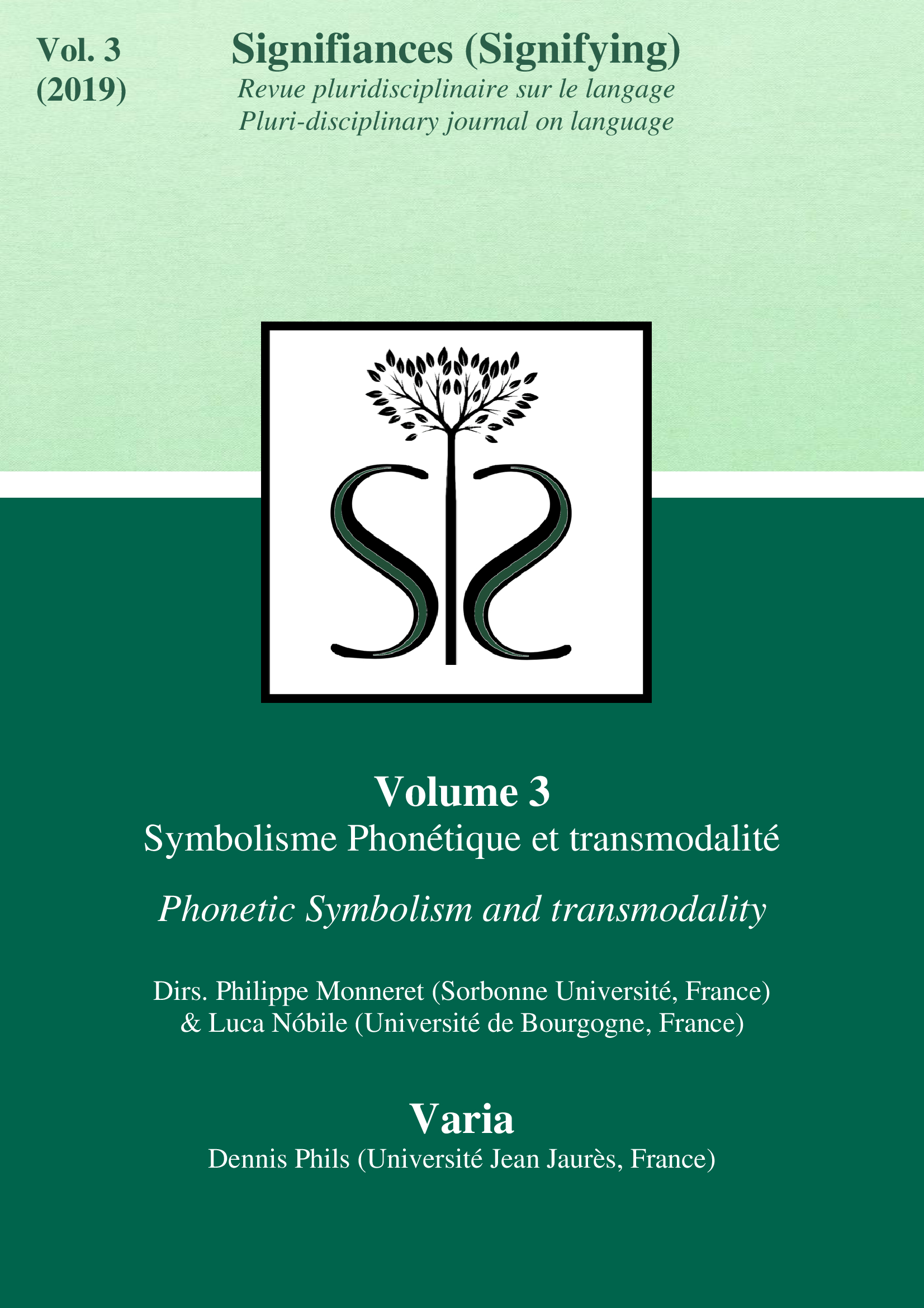Sounding the body: the role of the Valsalva mechanism in the emergence of the linguistic sign
DOI:
https://doi.org/10.52497/signifiances.v3i1.246Abstract
The main aim of this study, conducted within STEELS, a gestural theory of the origins of speech, is to set out a proposal as to the possible role of the Valsalva mechanism in the emergence of the linguistic sign. STEELS posits that in the earliest forms of speech developed by Homo, vocomimetic laryngeal resonances of nonlinguistic origin were integrated into LV (laryngeal + vowel) protosyllables referring back to oro-naso-laryngeal (ONL) actions such as breathing, sneezing and coughing. It further posits that these protosyllables were conceptually mapped to non-ONL bodily actions making use of the Valsalva manoeuvre, such as lifting, birthing, and defecating. This claim, which stems from a submorphemic analysis of certain Proto-Indo-European “body-part” roots projected back, within a gestural framework, to the emergence of speech, suggests that the vocomimetic protosyllables posited would have become (self-)referential through a neurocognitive process of recurrent, somatotopically-driven pattern-extraction.


